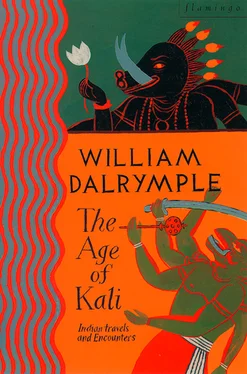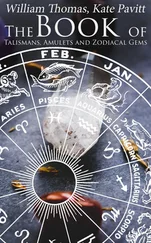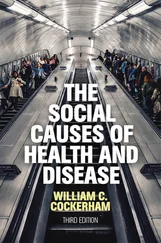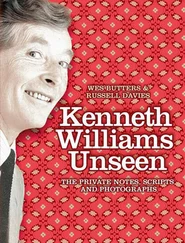1 ...6 7 8 10 11 12 ...22 I looked at the scene again, trying to picture its former glory.
‘But the worst of it,’ continued Mushtaq, ‘is that the external decay of the city is really just a symbol of what is happening inside us: the inner rot.’
‘What do you mean?’ I asked.
‘Under the Nawabs Lucknow experienced a renaissance that represented the last great flowering of Indo-Islamic genius. The Nawabs were profoundly liberal and civilised figures: men like Wajd Ali Shah, author of a hundred books, a great poet and dancer. But the culture of Lucknow was not just limited to the élite: even the prostitutes could quote the great Persian poets; even the tonga-drivers and the tradesmen in the bazaars spoke the most chaste Urdu and were famous across India for their exquisite manners.’
‘But today?’
‘Today the grave of our greatest poet, Mir, lies under a railway track. What is left of the culture he represented seems hopelessly vulnerable. After Partition nothing could ever be the same again. Those Muslims who are left were the second rung. They simply don’t have the skills or education to compete with the Punjabis, with their money and business instincts and brightly-lit shops. Everything they have has crumbled so quickly: the owners of palaces and havelis have become the chowkidars . If you saw any of the old begums today you would barely recognise them. They are shorn of all their glory, and their havelis are in a state of neglect. They were never brought up to work – they simply don’t know how to do it. As they never planned for the future, many are now in real poverty. In some cases their daughters have been forced in to prostitution.’
‘Literally?’
‘Literally. I’ll tell you one incident that will bring tears to your eyes. A young girl I know, eighteen years old, from one of the royal families, was forced to take up this work. A rickshaw driver took her in chador to Clarke’s Hotel for a rich Punjabi businessman to enjoy for five hundred rupees. This man had been drinking whisky, but when the girl unveiled herself he was so struck by her beauty, by the majesty of her bearing, that he could not touch her. He paid her the money and told her to go.’
Mushtaq shook his head sadly: ‘So you see, it’s not just the buildings: the human beings of this city are crumbling too. The history of the decline of this city is written on the bodies of its people. Look at the children roaming the streets, turning to crime. Great-grandchildren of the Nawabs are pulling rickshaws. If you go deeply in to this matter you would write a book with your tears.’
He pointed at the flat roof of a half-ruined haveli: ‘See that house over there? When I was a student there was a nobleman who lived there. He was from a minor Nawabi family. He lived alone, but every day he would come to a chaikhana [teahouse] and gupshup [gossip]. He was a very proud man, very conscious of his noble birth, and he always wore an old-fashioned angurka [long Muslim frock-coat]. But his properties were all burned down at Partition. He didn’t have a job and no one knew how he survived.
‘Then one day he didn’t turn up at the chaikhana. The next day and the day after that there was no sign of him either. Finally on the fourth day the neighbours began to smell a bad smell coming from his house. They broke down the door and found him lying dead on a charpoy. There was no covering, no other furniture, no books, nothing. He had sold everything he had, except his one set of clothes, but he was too proud to beg, or even to tell anyone of his problem. When they did a post-mortem on him in the medical college they found he had died of starvation.
‘Come,’ said Mushtaq. ‘Let us go to the chowk: there I will tell you about this city, and what it once was.’
At the height of the Moghul Empire during the early seventeenth century, said Mushtaq, Shah Jehan, the builder of the Taj Mahal, had ruled over a kingdom that stretched from the Hindu Kush in the north almost to the great diamond mines of Golconda in the south. But during the eighteenth century, as the empire fell apart, undermined by civil war and sacked by a succession of invaders from Persia and Afghanistan, India’s focus moved inexorably eastwards, from Delhi to Lucknow. There the Nawabs maintained the fiction that they were merely the provincial governors of the Moghuls, while actually holding a degree of real power and wealth immeasurably greater than the succession of feeble late-Moghul monarchs who came and went on the throne of Delhi.
Gradually, as the Moghuls’ power of patronage grew ever smaller, there was a haemorrhage of poets and writers, architects and miniature-painters from Delhi to Lucknow, as the Nawabs collected around them the greatest minds of the day. They were men such as Mir, probably the greatest of all the Urdu poets, who in 1782, at the age of sixty-six, was forced to flee from his beloved Delhi in an effort to escape the now insupportable violence and instability of the Moghul capital.
The Nawabs were great builders, and in less than fifty years they succeeded in transforming the narrow lanes of a small medieval city in to one of the great capitals of the Muslim world: ‘Not Rome, not Athens, not Constantinople, not any city I have ever seen appears to me so striking and beautiful as this,’ wrote the British war correspondent William Russell in the middle of the Great Mutiny. ‘The sun playing on the gilt domes and spires, the exceeding richness of the vegetation and forests and gardens remind one somewhat of the view of the Bois de Boulogne from the hill over St Cloud … but for the thunder of the guns and the noise of the balls cleaving the air, how peaceful the scene would be!’
After six hundred years of Islamic rule in India, what the Nawabs achieved at Lucknow represented the last great swansong of Indo-Islamic civilisation, a final burst of energy and inspiration before the onset of a twentieth century holding little for Indian Muslims except division, despair and inexorable decline.
Since I had arrived in the city I had spent a couple of bright, chilly winter days jolting around the old city on a rickshaw, visiting a little of what was left. The architecture of the Nawabs has sometimes been seen as a decadent departure from the pure lines of the great Moghul golden age, and there is some truth in this: there is nothing in Lucknow, for example, to compare to the chaste perfection of the Taj. Moreover, in the years leading up to the Mutiny some of the buildings erected in Lucknow did indeed sink in to a kind of florid, camp voluptuousness which seems to have accurately reflected the mores of a city whoring and dancing its way to extinction. To this day a curtain covers the entrance to the picture gallery in Lucknow, after a prim British memsahib fainted on seeing the flirtatiously bared nipple of the last Nawab, Wajd Ali Shah, prominently displayed in a portrait of the period. The same feeling of overripe decadence is conveyed in late-Nawabi poetry, which is some of the most unblushingly fleshy and sensual ever written by Muslim poets:
I am a lover of breasts
Like pomegranates;
Plant then no other trees
On my grave but these.
(Nasikh)
Confronted with such verses, Mir expressed his view that most Lucknavi poets could not write verse, and would be better advised to ‘stick to kissing and slavering’.
He may well have thought the same of late-Nawabi architecture, with its similarly unrestrained piling on of effects. For by the end Lucknow’s builders had developed a uniquely blowsy Avadhi rococo whose forms and decorative strategies seem to have borrowed more from the ballrooms and fairgrounds of Europe than from the austere shrines and fortresses of Babur and Timur the Lame. There was no question of sobriety or restraint: even in monuments built to house the dead, every inch of the interior was covered with a jungle of brightly coloured plasterwork intertwining promiscuously with gaudy curlicues of feathery stucco.
Читать дальше












